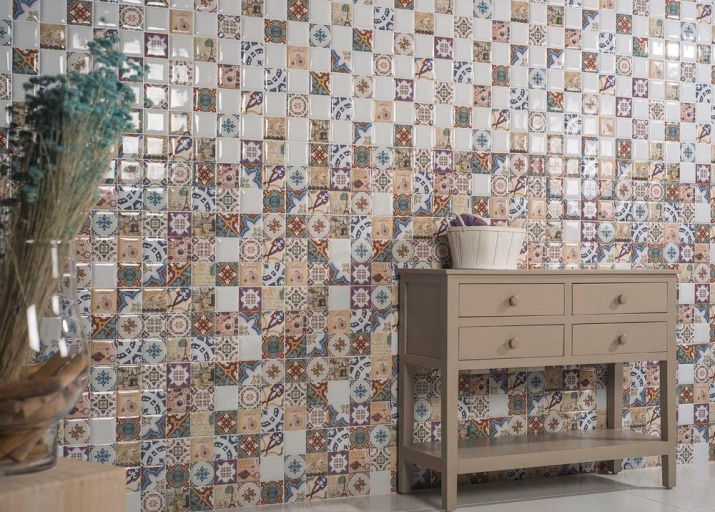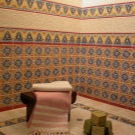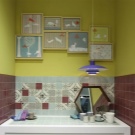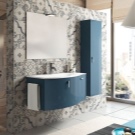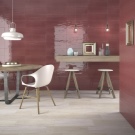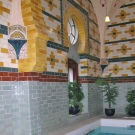Mayolica Tile

Tile is one of the most interesting ways to make the interior unique and beautiful. Its use is also beneficial from an economic point of view, due to the durability, as well as the cheapness of production. Today we will talk about Majolica tiles.
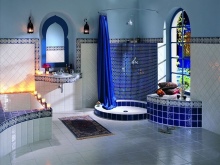

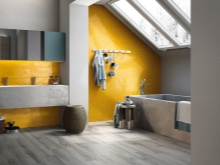
A little bit of history
This type of tile appeared even five thousand years ago. Its homeland is the territory of ancient Egypt, Babylon, Assyria and Mauritania. In Europe, its samples came with the help of traders from the Spanish island of Mallorca. It is from him that the name of this type of tile originated.
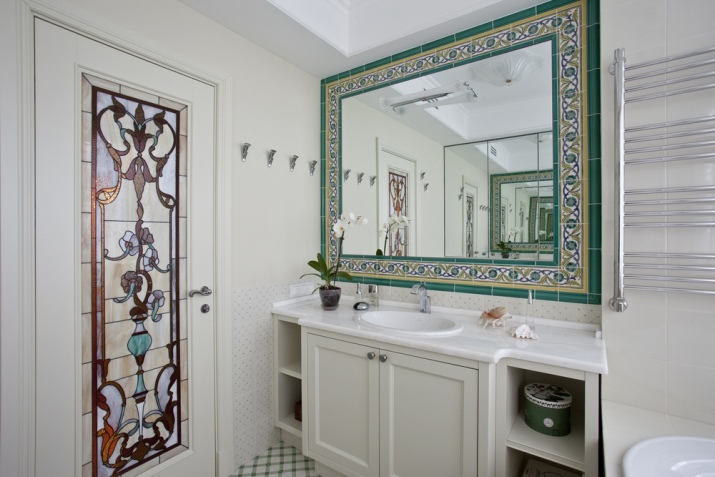
Until the beginning of the 16th century, it was imported into Europe, and only at that time was its own production started. The first place where it was produced was Delft in what is now the Netherlands. It was white with a blue pattern, which was applied by hand.
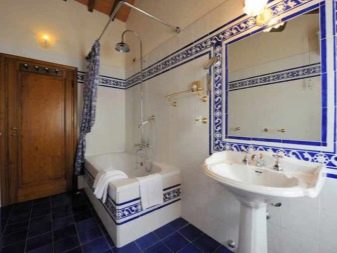
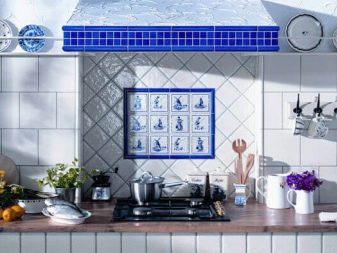
By the way, the image on it was not in the form of an ornament, like on the original version. The European version usually depicted some objects or even scenes from life. According to other reports, it was first made in Europe during the Renaissance in Italy. Here it was decorated with exquisite paintings, so it was in demand among the nobility and the nobility. The centers of majolica production were Naples, Siena, Florence and Urbino.
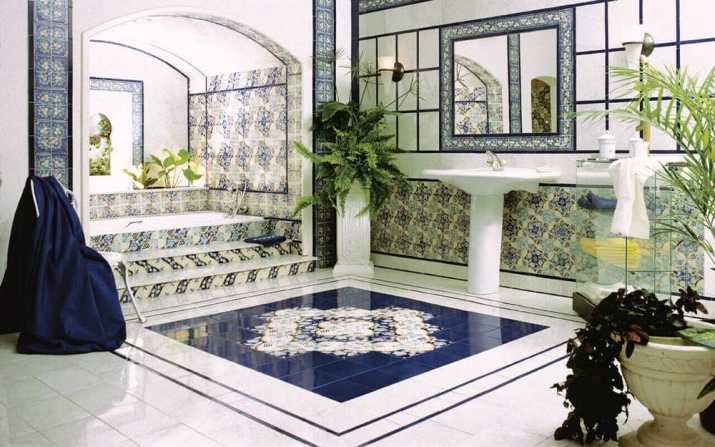
If to speak about Russia, the first examples of these tiles appeared here in the Middle Ages. They were usually used to cover the stoves or the facades of houses. But the industrial production of tiles began only in the 18th century. The workshops in Yaroslavl, Gzhel, as well as Grebenshchikov's factory in Moscow were engaged in it.
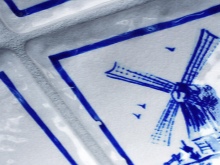
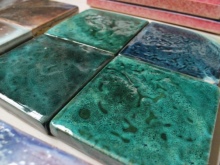
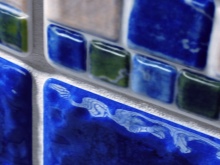
Features, production and advantages
Today, majolica is a ceramic tile, which is made of red clay, after which it is patterned and covered with glaze. Now increasing in popularity is the monochrome tiles, in which the glaze and paint are simply sintered together and applied at the same time. This solution makes it unusually beautiful and original.
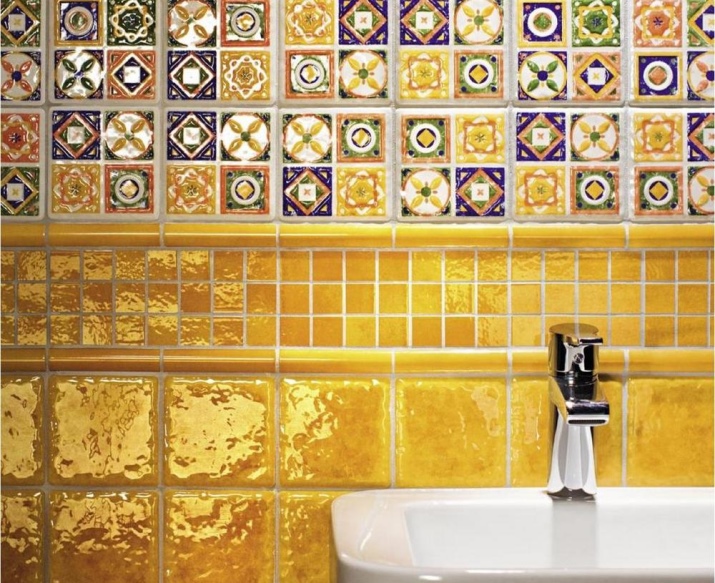
The disadvantages of its application are:
- high cost;
- poor resistance to physical impact (it can be broken even with a small application of force).
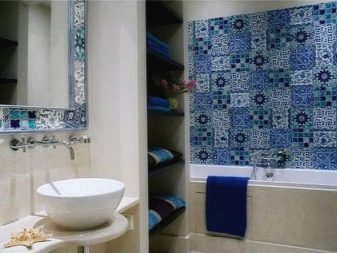
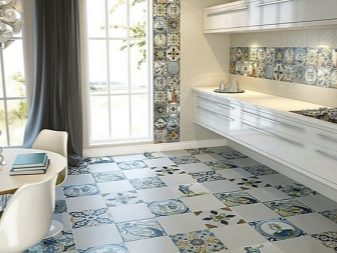
The advantages of majolica include:
- high resistance to fire and high temperatures;
- absence of the possibility of accumulation of static electricity;
- pleasant appearance;
- durability;
- excellent thermal conductivity;
- environmental friendliness, as it is made on the basis of natural clay;
- easy care.
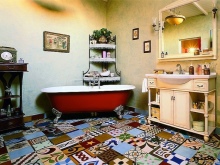
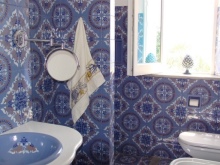
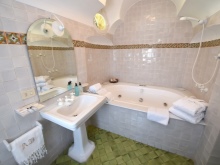
If we talk about in what interiors it is best to apply it, it is necessary to say about the creative. In this version, there should not be any strict lines or outlines. Majolica will also be great for Mexican or country style. It has long been noted its compatibility with natural materials that are characterized by roughness - textured fabric, natural stone or wood, as well as untreated plaster.

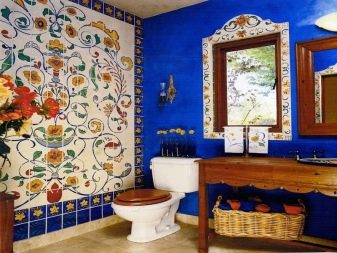
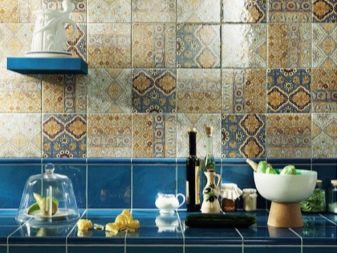

Its production consists of the following steps:
- mixing the necessary components from which the tiles are made;
- molding and subsequent pressing;
- drying;
- firing;
- glaze application;
- coloring or painting;
- the final firing.
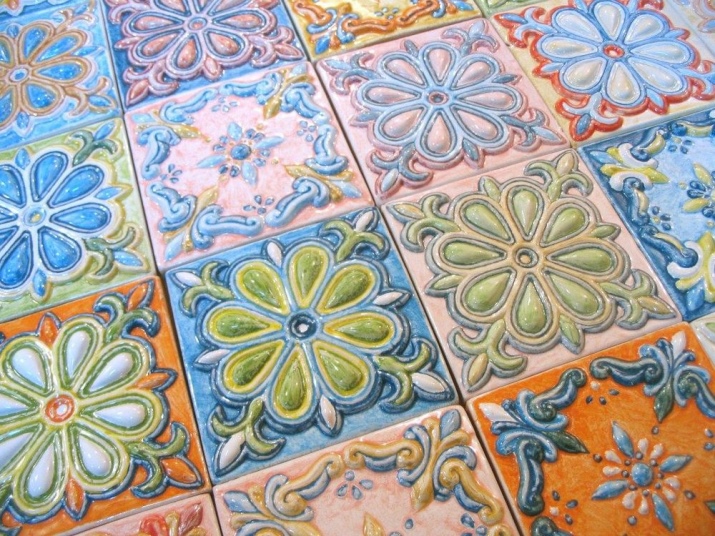
Usually to create majolica they use a combination of clays, which are easy to melt, adding to them ferrum oxide or sand. The resulting shards are porous and have a brownish-reddish color. The white opaque glaze is used as a base for painting. Such a technique makes the colors applied to the surface more spectacular and bright.
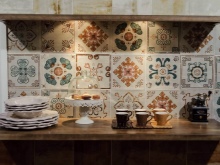
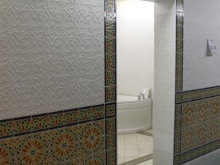
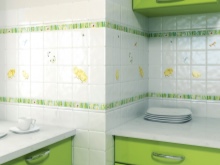
But the final result depends, first of all, on the person who performs the painting, and on what means he uses and his sense of taste and color. It is important that the paints are applied even on the undried glaze, so any mistake could completely ruin the product. It is even a sloppy brushstroke.
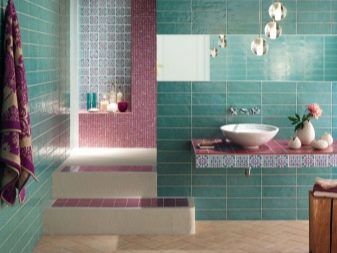
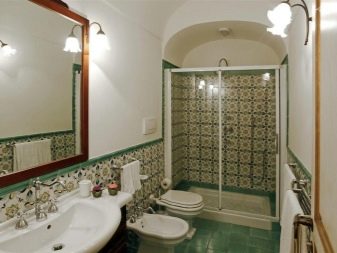
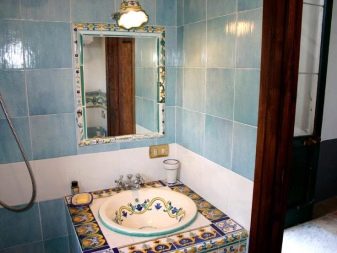
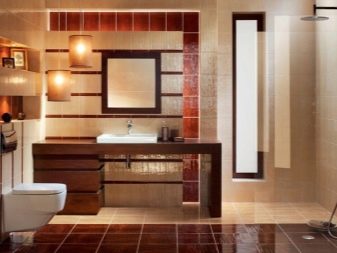
For painting, they usually use lead, tin, copper, or silver-based luster paints. They give the tiles a metallic or pearlescent sheen and are applied with a brush. After they have been applied, the tiles are fired again to fix the pigments. The sintering of luster paints, depending on the base, occurs at temperatures ranging from 750 to 780 degrees, and in some cases 900 to 950 degrees.
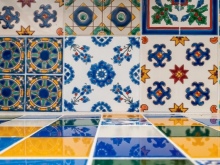
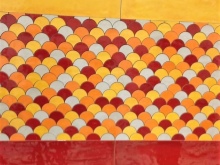
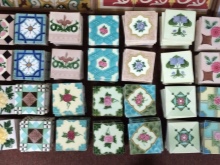
Tile sizes and where it can be used
Tiles majolica can be different sizes, as well as any other. But the most popular are models 15 by 15, 15 by 20, as well as 20 by 20 centimeters. Also, there are models of wall tile size of 50x25 cm and floor tiles - 50x30,4 cm. Domestic brands to the above sizes also offer options - 60 to 20 cm, 16.5 to 16.5, 8 to 8, 30 to 30 cm, 33.3 to 60 cm, 22.3 to 44.8 and so on. In general, as you can see - if you want, you can find almost any size of tile that interests the potential buyer.
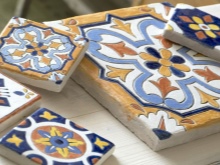
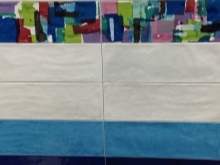

Now let's talk about what exactly majolica can be used for. It will be a great solution for tiling a fireplace. It will be interesting for owners of country houses, who can make a lining with it, framing the niche on the contour or just placing a few bright tiles on the background of white. If you live in an apartment and decided to install a biokitchen, then placing majolica around it will also be a good solution.

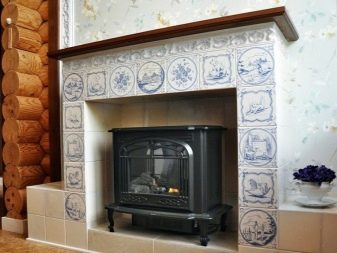
Often you can find these tiles on the streets of cities in the Mediterranean. It is by this analogy you can decorate the walls of your hallway with it. At the threshold of the apartment, such an element will look just great.
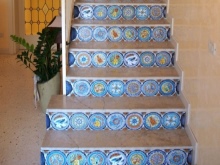
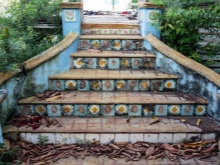
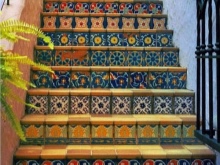
You can divide the wall with a horizontal border, made of majolica. And the rest of the surface can be covered with plaster or porcelain stoneware. It will turn your hallway into a kind of small medieval street.
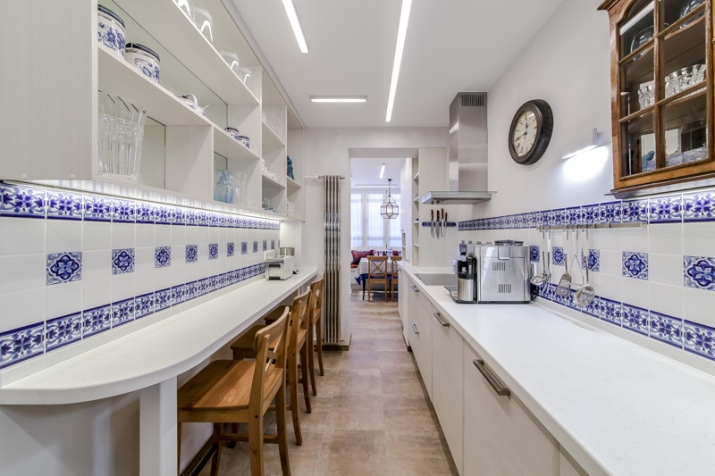
Another use of majolica is to frame doorways or windows. This use will give them an amazing look. You can also cover the window jambs with glazed tiles with patterns. And if you also do, the same with the window sills, then an interesting design solution is ready.
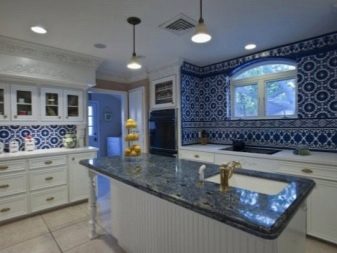
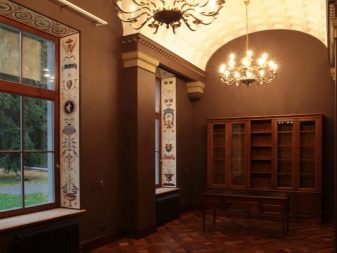
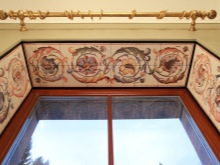
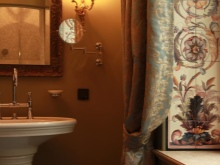
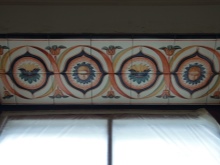
Another interesting option, which is offered by designers - tiling the walls along the stairs. This allows you to give them a certain sophistication and loftiness. Some designers suggest decorating the steps with it.
Majolica will be appropriate in the kitchen. In the Middle Ages it was very often used for decoration of this part of the house. It is a good idea to incorporate it into the decoration of monochrome type tiles. It can be used to decorate various objects - mirrors, tables, countertops.
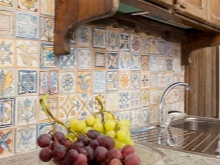
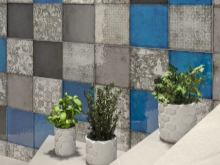

Price
In the matter of cost, the range of numbers will be very large.
It depends on several factors:
- the wishes of the customer;
- selected tiles;
- the complexity of installation;
- the price of glue, as well as mortar for caulking and joint processing.
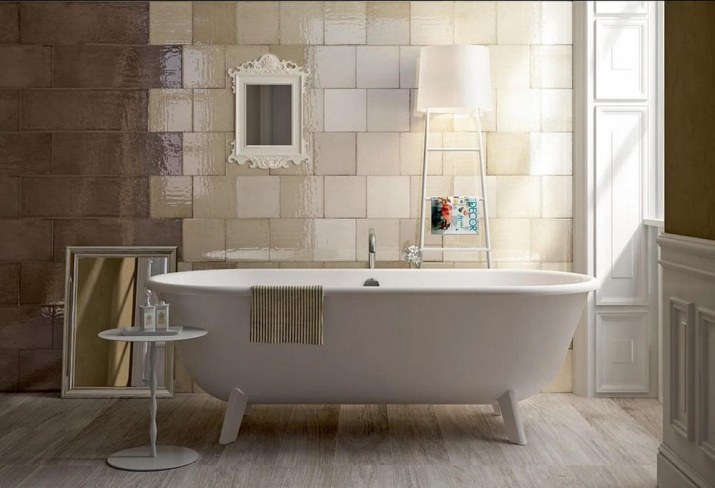
In general, majolica - a pleasure not too cheap, because it looks expensive, beautiful and bright. For monochrome tiles are usually asked anywhere from 900 to 2200 rubles per square meter.
Decorative tile costs from 80 to 120 rubles apiece, and the price of mosaics starts at 2500 rubles. And prices can go up to 7,000 rubles for an ordinary tile and up to 10,000 rubles for a square of painted type.
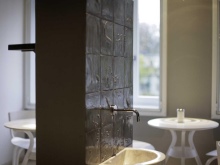
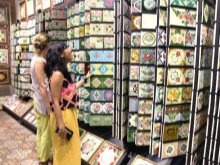
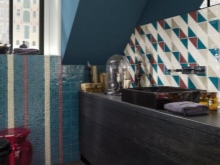
Those who want to save money - can save money on large tile panels. It is a problem to make a pattern out of such elements, as well as to market them, and therefore the price of them is reduced. But they can be used in tiling, creating something unusual and fantastic.
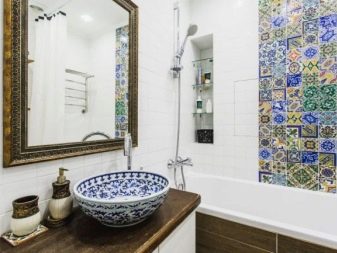
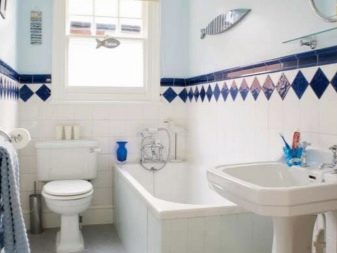
Features of the use of majolica in different countries
Let's talk about the features of this type of tile in different countries. Today, Italian majolica is most often produced in yellow-green, as well as blue-green colors, because the pigments of these colors perfectly withstand high temperatures during firing. The drawing is first applied to the glaze of the matte type, after which everything is covered with a transparent glaze, the tiles have a rounded shape. Most often, majolica from Italy are used to create a classic design. It has an inherent aristocratic and luxurious appearance.
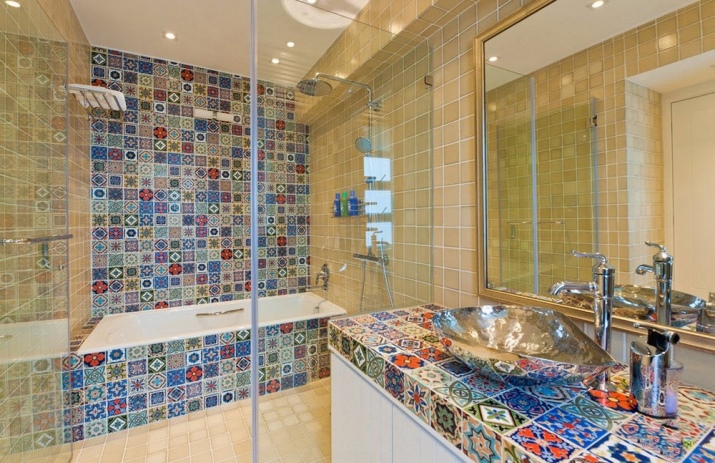
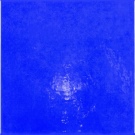
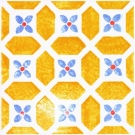
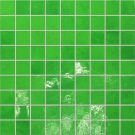
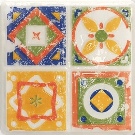
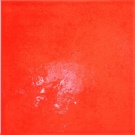
The history of the Dutch majolica goes back to the XVI century. Just from that time there were a few factories which made it up to the present day. The Dutch were the first to put on tiles various subjects - battles, battles, events, mills and scenes from rural life. It is also, like the Russian, characterized by blue and white tones.
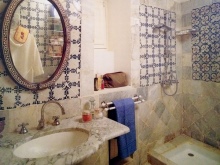
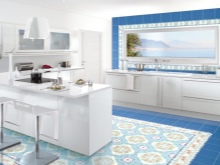
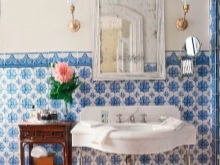
As already written, the Russian majolica began to be created somewhere in the XVII - XVIII centuries in Yaroslavl, Moscow and Gzhel under the influence of the majolica from Holland. In Russia, this type of tile has more often a delicate range of white and blue colors with elegant ornaments, as well as images of animals and flowers. It is also known about the use of majolica in various works by Russian artists, in particular, Vrubel and Vasnetsov.
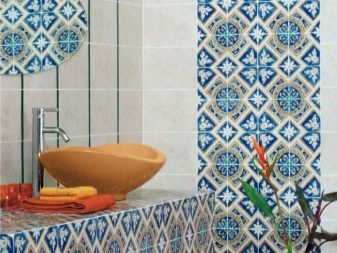
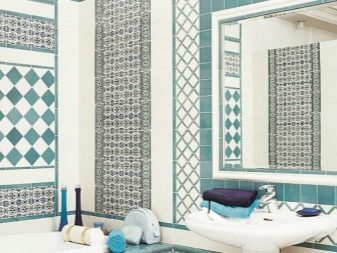
Reviews
If we talk about the reviews on the use of majolica, it can be done on the example of the products of the main brands represented on the domestic market, which today there are five:
- Uralkeramika (Russia);
- Iris ceramica (Spain);
- Pamesa Kasa (Spain);
- Sokol (Russia);
- Tubadzin (Poland).

About the products of Uralkeramika. Buyers say that it looks beautiful and well made. Among the advantages noted is that bright drawings are applied and the dimensions stated in the specifications are respected. It is noted that there are simply no defective products on the shelves. Specialists say that this majolica glues very well to any mortar and holds firmly.
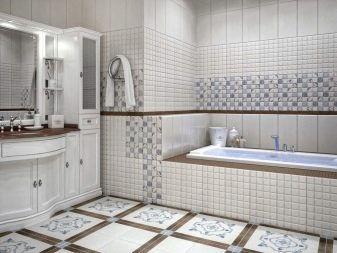
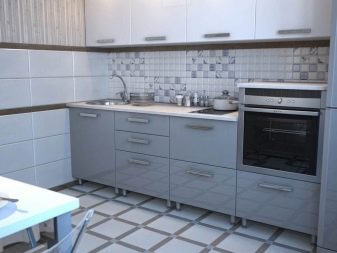
Iris ceramica tiles customers appreciate first and foremost its vintage appearance, but also the great variety of shades and patterns. Specialists note that it is very easy to work with and it is perfectly packaged at the manufacturing plant. Also, among the advantages is the availability of large products, which allows you to lay out any ornament. If we talk about Iris ceramica majolica, users primarily note its high quality and excellent technical characteristics. While its price is not the highest, it is called the best solution in terms of quality-price ratio.
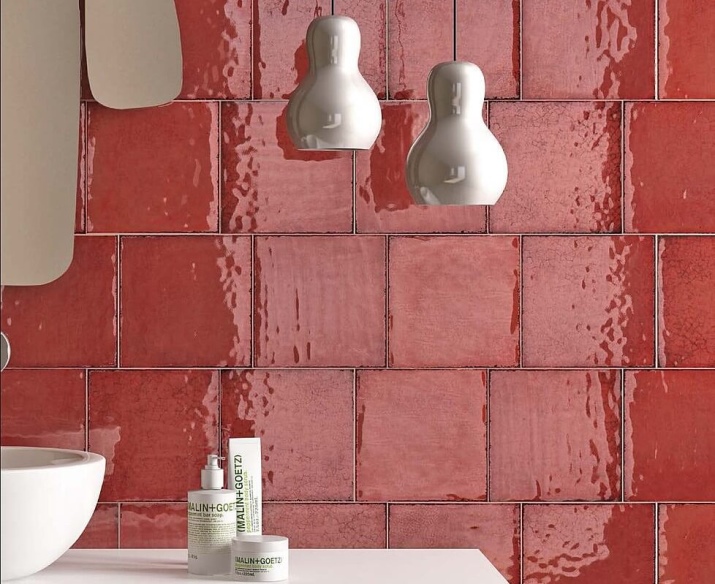
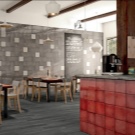
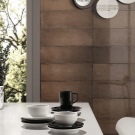
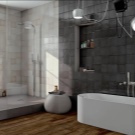
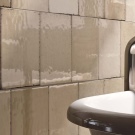
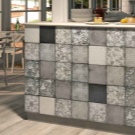
Reviews about the tile company "Sokol" are also positive. Users note the correct geometric dimensions, as well as the fact that it is very easy to put. That's just a lot of people say that the choice of colors is poor and say - if the manufacturer could offer a wider range of colors, their choice fell on the majolica.
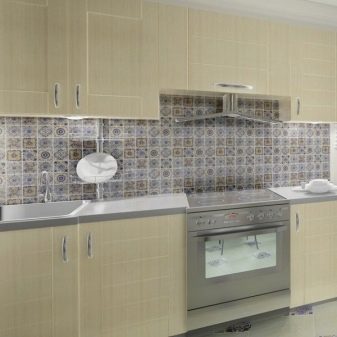
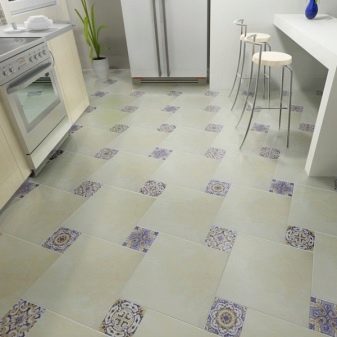
About the products from Polish Tubadzin Customers say that it is reliable and is represented mainly by large products. At the same time it is durable, high quality and has a lot of colors.
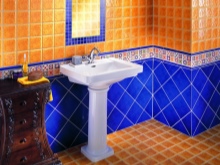
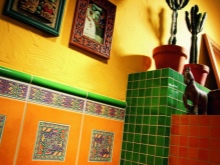
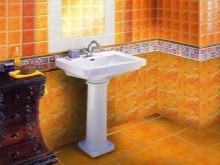
Modern analogues
If we talk about majolica, then today there are many analogues on the market. First of all, it is a cheap ceramic tile, made in the style of majolica or under it. This variant differs primarily in the fact that the picture here is not made under the glaze, but simply stamped on it. This substantially reduces the performance characteristics of analogues. And the drawing after a while begins to be simply erased.
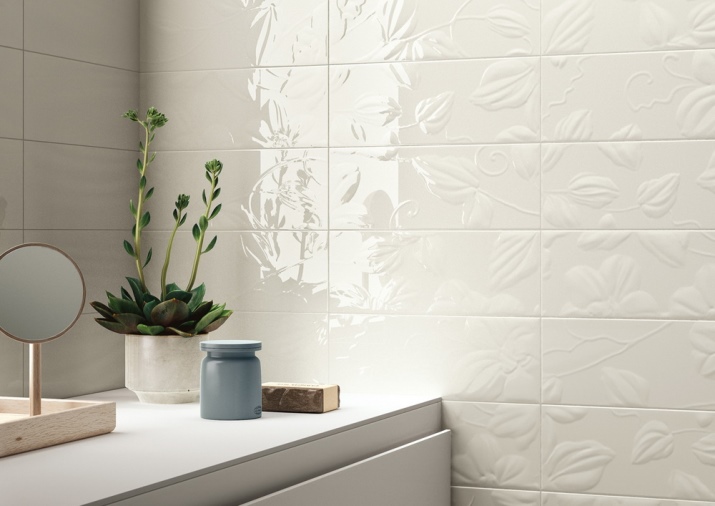
But analogues are more practical and accessible. Most often the basis for them is porcelain stoneware or monocottura. They are resistant to moisture, as well as durability. This makes it possible to expand the scope of use of majolica.
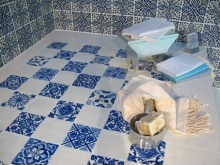
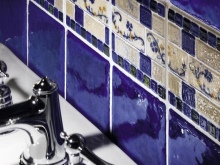
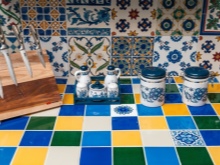
But modern technology has made it possible to achieve the highest quality of the image, as well as an amazing resemblance to the original. It is so strong that, in some cases, even experts can not immediately distinguish the alternative from the original. This is due to the presence of analogues even imitation of the effect of aging and textured surface.
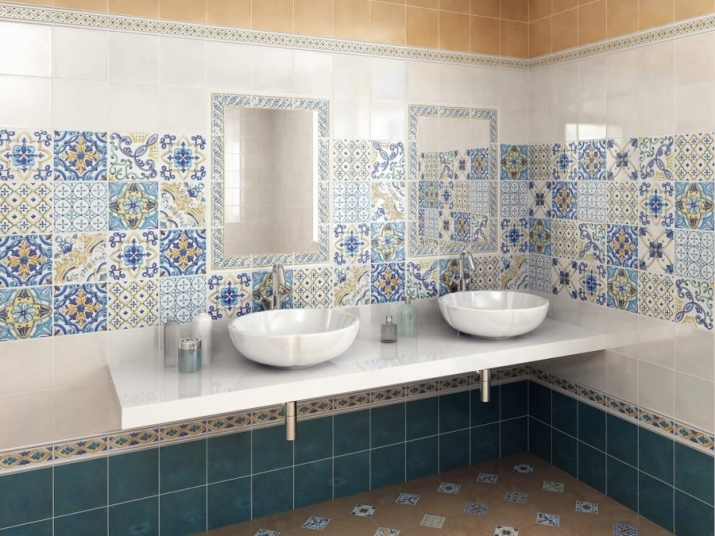
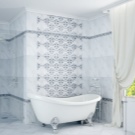
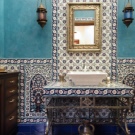
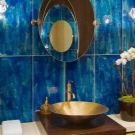
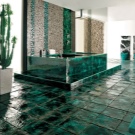
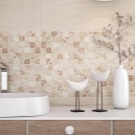
Examples of applications in bathroom design
If we talk about majolica tiles in the design of the bathroom, it will be an excellent solution for framing the walls, bathroom, shower room or dividing the wall into two parts. It will perfectly harmonize with plaster and tiles of other colors. It is only important to respect the combination of different colors.
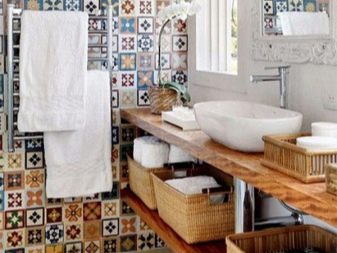
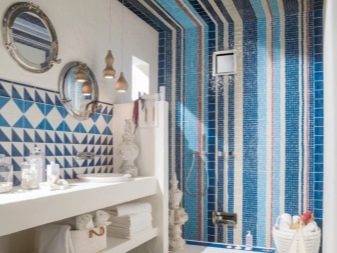
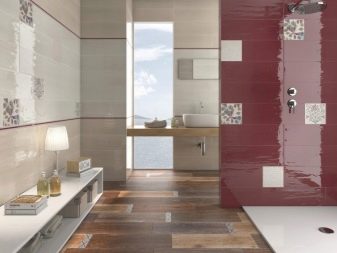
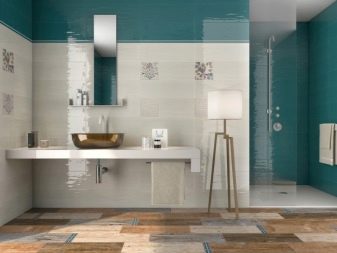
As written above, an interesting solution would be to use it as part of the division of the wall into two parts. But you can go further and cover the area between them with such a tile - the combination of simple monochrome tiles with painted parts will just look delightful. And we are talking not only about full tiles, but also the decoration itself.
